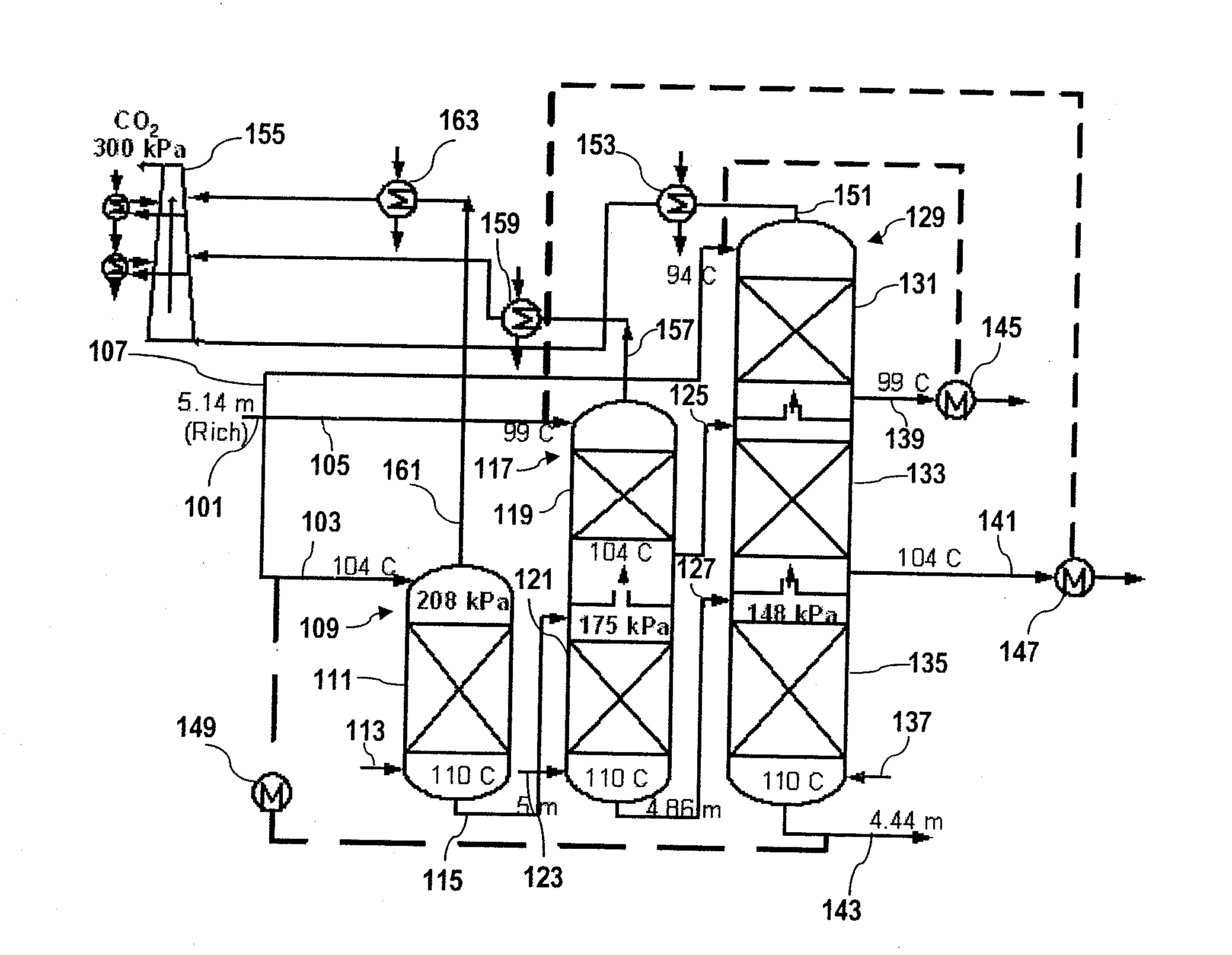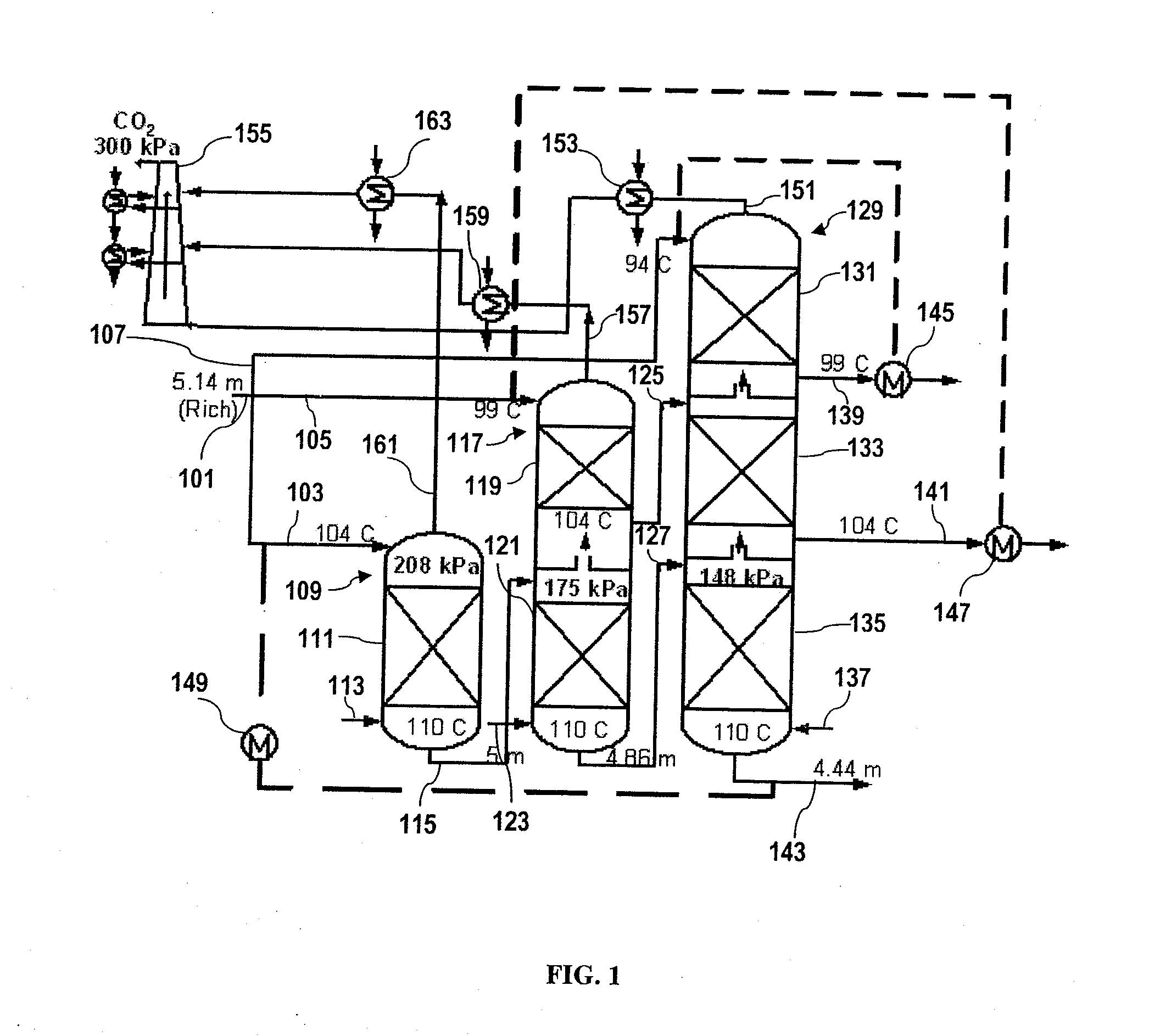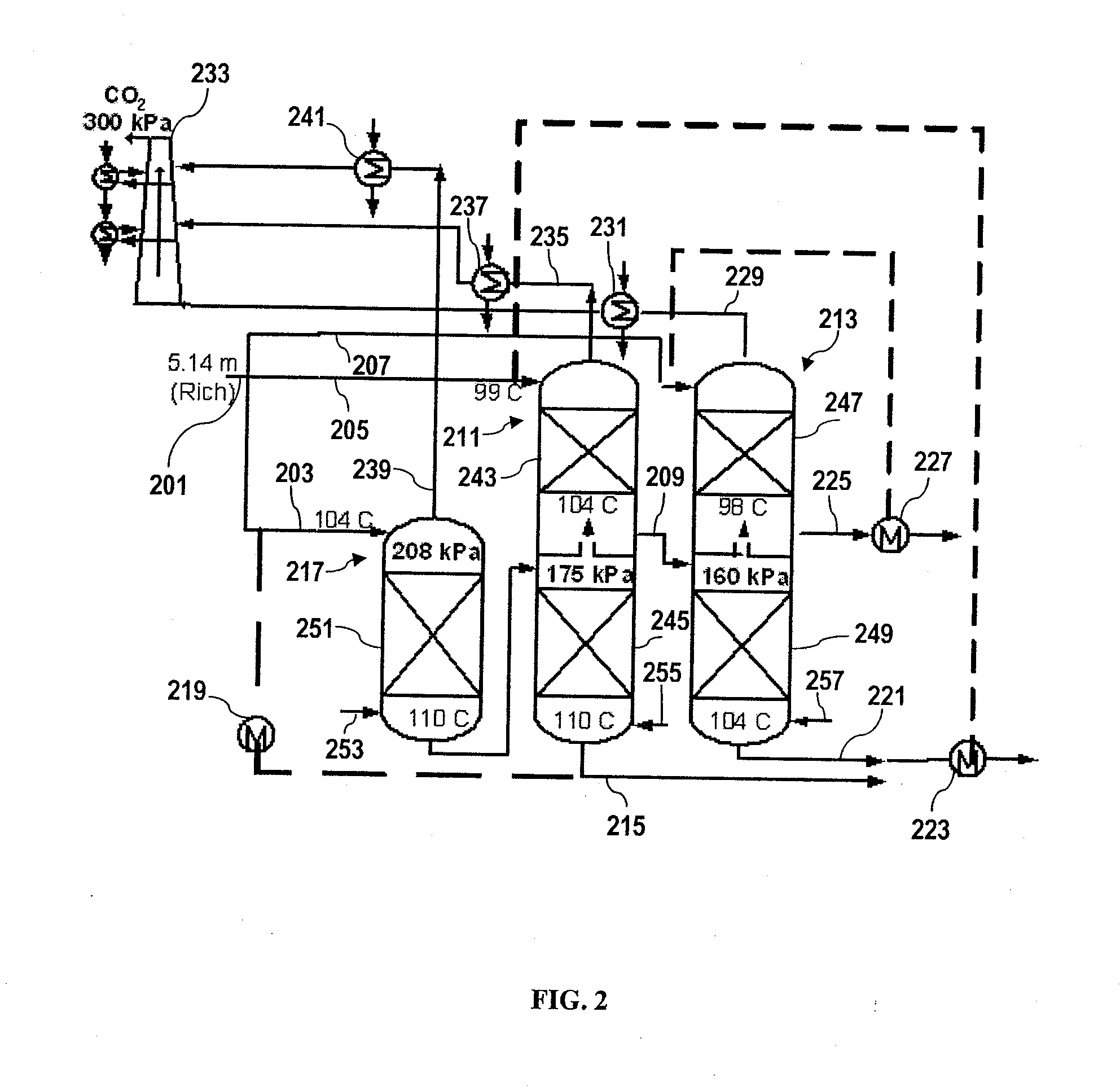Regeneration of an Aqueous Solution from an Acid Gas Absorportion Process by Matrix Stripping
a technology of acid gas absorption and matrix stripping, which is applied in the direction of separation processes, liquid degasification, hydrogen sulfides, etc., can solve the problems of high capital cost of columns, pumps and exchangers, initial solvent and operating cost, and impair the effect of technology
- Summary
- Abstract
- Description
- Claims
- Application Information
AI Technical Summary
Benefits of technology
Problems solved by technology
Method used
Image
Examples
example 1
Modeling of Four Alternative Stripper Configurations with Five Different Solvents
[0052]For this Example, four new stripper configurations (matrix, internal exchange, flashing feed, and multipressure with split feed) were evaluated with five different solvents: 7 m (30 wt %) monoethanolamine (MEA), potassium carbonate promoted by piperazine (PZ), promoted MEA, methyldiethanolamine (MDEA) promoted by PZ and hindered amines. The configurations, solvents, and operating parameters were evaluated to determine which configurations, solvents, and operating parameters result in the greatest energy savings over the baseline configuration and the improved baseline configuration.
A. ANALYSIS OF THE BASELINE CONFIGURATION
[0053]Previous investigation suggests the optimum generic solvent at 160 kPa (normal pressure) is one with a higher heat of desorption than 7 m (30-wt %) MEA (Oyenekan et al., 2006). Since PZ / K2CO3 solvents have heats of desorption lower than 7 m MEA, they cannot be employed in a...
example 2
Modeling of Matrix Stripping Configuration with Two Different Solvents
[0120]An equilibrium stripper model for aqueous solvents developed in Aspen Custom Modeler (ACM) was used to evaluate a matrix stripping configuration with two different solvents and three different operating scenarios for comparison to a baseline scenario.
[0121]All of these cases were calculated with a 5° C. approach in the cross-exchanger. The low pressure stripper or only stripper in each case was designed to operate at 160 kPa. “Percent split” for each case is defined as the portion (by mass) of the rich solvent stream that is fed to the second stripper divided by of the portion (by mass) of the rich solvent stream that is fed to the first stripper, multiplied by 100%. The rich solvent feed rate to the high pressure column of the double matrix configuration was defined as the split ratio times the feed to the high pressure column. The pressure ratio of the first column to the second column was also optimized.
[...
PUM
 Login to View More
Login to View More Abstract
Description
Claims
Application Information
 Login to View More
Login to View More - R&D
- Intellectual Property
- Life Sciences
- Materials
- Tech Scout
- Unparalleled Data Quality
- Higher Quality Content
- 60% Fewer Hallucinations
Browse by: Latest US Patents, China's latest patents, Technical Efficacy Thesaurus, Application Domain, Technology Topic, Popular Technical Reports.
© 2025 PatSnap. All rights reserved.Legal|Privacy policy|Modern Slavery Act Transparency Statement|Sitemap|About US| Contact US: help@patsnap.com



